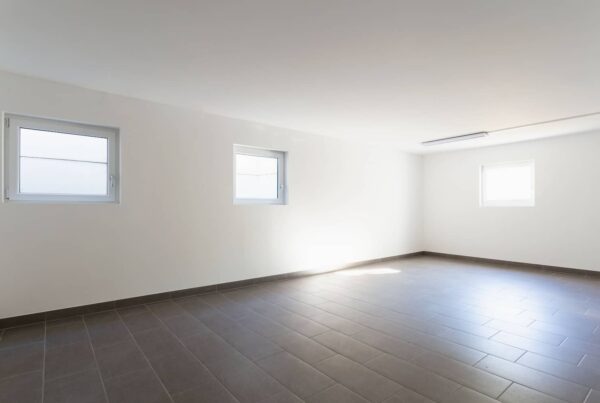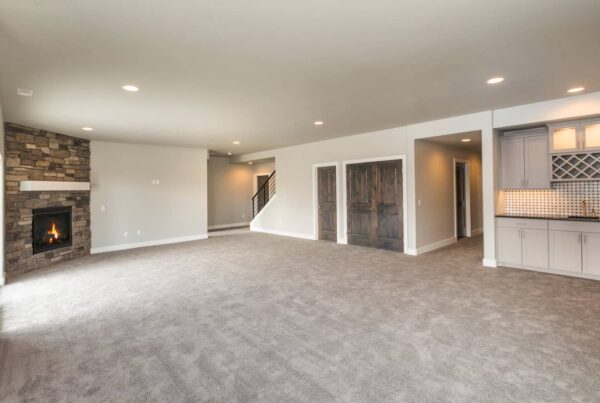
For many homeowners, the differences that separate the cellar vs basement are murky at best. Knowing if you have a real cellar or a basement can help you turn these hidden spaces from unused areas into great, useful spots.
In this post, we’re going to dig into the unique features, histories, and benefits of cellars and basements. You’ll pick up tips to tell them apart, from their layout to the materials used to build them. We’ll also share expert advice on how to keep these spaces in good shape and when it’s time to call for professional help. So grab a flashlight and watch your step, and we’ll get to it!
What is a Cellar?
A cellar is a room located underground, typically beneath a building or house. Historically, cellars were used for storing wine, coal, and other perishable goods that required cool, dark, and humid conditions.
Fun fact – the word “cellar” comes from the Latin “cellarium,” meaning a storage room or pantry! They often have stone or brick walls and dirt or gravel floors, which help maintain ideal temperature and humidity levels.
Some key features of a traditional cellar include:
- Limited natural light: Cellars typically have few, if any, windows to keep the space dark and cool.
- Vaulted ceilings: Many cellars feature arched or vaulted ceilings. This can help distribute the weight of the building above and provide better insulation.
- Ventilation: Proper ventilation is crucial in cellars to prevent mold growth and regulate humidity levels.
While wine cellars are perhaps the most well-known type of cellar, these underground spaces have served various purposes throughout history. Root cellars, for example, were popular to store vegetables, fruits, and other produce before the advent of modern refrigeration. Some homeowners also use their cellars as storage spaces for items like holiday decorations or old furniture.

Example of a Wine Cellar
What is a Basement?
Now, let’s take a look at basements. A basement is a room or series of rooms located below ground level, typically under a building or house. Unlike cellars, which have been around for centuries, basements are a more modern addition to residential architecture. Basements are usually more spacious than cellars and have higher ceilings.
Key features of a typical basement include:
- Concrete floors and walls: Basements are commonly concrete, which provides durability and moisture resistance.
- Finished or unfinished: Basements can be left unfinished with exposed pipes and wiring, or they can be finished with drywall, insulation, and flooring to create additional living space.
- Egress windows: Modern building codes often require basements to have egress windows, which provide a safe exit in case of emergency and allow natural light to enter the space.
Basements serve a wide range of purposes in modern homes. An unfinished basement is often used for storage, laundry facilities, or housing mechanical equipment such as furnaces and water heaters. Finished basements, on the other hand, can be transformed into extra living spaces. This can be areas like home offices, gyms, playrooms, or even separate apartments.
In regions prone to severe weather events like tornadoes, basements can also provide a safe shelter during emergencies.

Example of a Finished Basement
Cellar vs Basement: Key Differences
With a general understanding of both spaces, we can now take a side-by-side look at the cellar vs the basement. Understanding these distinctions can help you identify which type of space you have. Moreover, you’ll be better informed on how to make the most of it!
Location and accessibility
- Cellars are typically located beneath the ground floor of a building. Often, they’re accessed through a separate exterior entrance or a trapdoor within the house.
- Basements are usually located directly below the main floor of a house. Typically, they’re accessed via an interior staircase, though some may have an exterior entrance as well.
Purpose and design
- Cellars were originally designed for storage purposes, particularly for items that benefit from cool, dark, and humid conditions like wine, coal, or root vegetables.
- Basements are more versatile spaces that can be storage, housing utilities, or additional living areas when finished properly.
Lighting and ventilation
- Cellars typically have limited natural light due to their original purpose as storage spaces, with few or no windows.
- Basements often have larger windows or egress windows that allow for more natural light and ventilation, especially in finished basements designed for living purposes.

Benefits of a Cellar
If you have a cellar in your home, you can take advantage of its unique characteristics in various ways.
- Ideal storage conditions – Cellars provide the perfect environment for storing items that require cool, dark, and humid conditions, such as wine, preserves, root vegetables, and flower bulbs.
- Potential property value increase – A well-maintained and functional cellar can be an attractive selling point for potential buyers, particularly those interested in wine collecting or home preservation.
- Emergency shelter – In areas prone to severe weather, cellars can serve as a secure shelter during storms or tornadoes, offering protection from high winds, hail, and debris.
While not every home has a cellar, those that do can utilize this unique space for practical storage, potentially increasing property value, and emergency preparedness.
Benefits of a Basement
Basements are a valuable asset to any home, offering a range of benefits that can enhance your living experience and increase your property value.
- Additional living space – Finished basements can be home offices, guest rooms, playrooms, or any other space that suits your needs, providing a significant amount of extra living area.
- Flexibility and customization – Basements are versatile spaces that can accommodate various interests and activities, such as home gyms, theaters, or hobby rooms.
- Increased home value – Similar to a cellar, a finished basement is a desirable feature for potential buyers, as it offers additional living space and flexibility. Even an unfinished basement with potential for renovation can add value to your home.
- Convenient storage – Basements provide ample storage space for items you don’t need to access regularly, helping to keep your main living areas organized and clutter-free.
Recommended Maintenance
To keep your cellar or basement in top condition and prevent potential issues, it’s essential to follow a regular maintenance routine. Start by keeping the space clean and well-organized, as clutter can hide signs of moisture, pests, or structural problems. Regularly sweep or vacuum the floors, and dust shelves, walls, and any stored items to maintain a tidy environment.
Additionally, moisture control is crucial in both cellars and basements, as excessive humidity can lead to mold growth, musty odors, and structural damage. Install a dehumidifier to regulate humidity levels, and consider using moisture-absorbing materials like charcoal briquettes or silica gel packs in enclosed spaces. Applying a waterproof sealant to walls and floors can help prevent moisture infiltration and protect your space from dampness.
Proper ventilation is another key aspect of cellar and basement maintenance. Ensure that any vents or windows are clear of obstructions and functioning properly to allow for adequate air circulation. If your space lacks natural ventilation, consider installing an exhaust fan or using a portable air purifier. These help regulate air quality and prevent the buildup of stale, musty odors.
Finally, pests can be a common problem in underground spaces, attracted by the cool, dark environment and potential food sources. Regularly inspect your cellar or basement for signs of pest activity, such as droppings, gnaw marks, or unusual odors.
When to Call a Professional
While regular maintenance can help keep your cellar or basement in good condition, some issues may require the expertise of a professional. If you notice any signs of structural damage, call for help. This can look like such as cracks in the walls or foundation, uneven floors, or bowing walls. These issues can indicate serious problems that, if left unaddressed, could compromise the safety and integrity of your home.
Water damage is another red flag that should get attention as soon as possible. If you notice persistent moisture, standing water, or signs of mold growth, it’s crucial to address the problem. If you’re considering renovating your cellar or basement, it’s advisable to consult with a professional first. They can help you navigate the complexities of local building codes, obtain necessary permits, and provide valuable insights.
Conclusion
Ultimately, both cellars and basements are valuable and versatile features to have in your home! Understanding the differences between a cellar vs a basement is essential for making the most of these valuable subterranean spaces.
Regardless of where you stand on cellar vs basement preference, a well-maintained version of either can be invaluable. Following regular maintenance and knowing when to call in professionals, you can ensure that either space remains a valuable asset. To get guidance on your cellar or basement and schedule various inspections in Merrimack, NH, and surrounding areas, schedule online with Alpha Building Inspections today.



